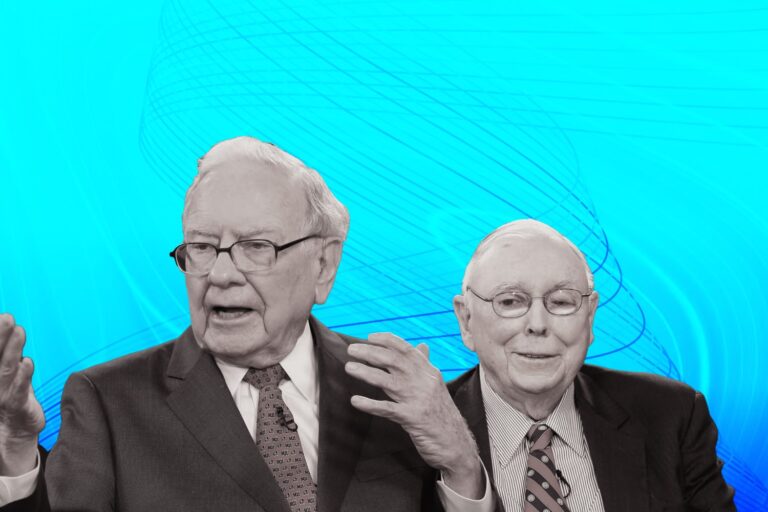NBA: The Uncrowned King of Digital Transformation
Beyond any doubt, the sports industry has become rife with a fresh influx of buzzwords and phrases over recent times. Given that, “fan engagement” remains a ubiquitous, box-ticking term that has been at the heart of sports marketing for many years. Whereas such a sportive concept is no longer new, the new wave of digitalization – together with the emergence of other interactive technologies – has redefined the way supporters interact with their mobile devices, which means that there are now countless ways for sports properties to yield the rewards of establishing positive and direct relationships with their global fanbases.
Not only does this enable sports properties to access richer data sets so as to better understand their fans, but it can also be relayed to sponsors who are now far more interested in putting their name to a piece of likable, shareable content rather than a static pitch-side billboard.
When it comes to the success of digital transformation within the sporting landscape, the NBA turns out to be an outstanding exemplar. “We need to commit to innovating,” confidently stated Jeff Marsilio, NBA’s vice president of the Global Media. Not only expressed in these words, but the NBA’s ambition for digital-driven innovations has also been under way for several years, challenging the digital transformation heavyweights from every angle. Let’s read on to discover the ways sports league turn to digital tech as well as how they monetize within such an ever-evolving sphere.
Before delving into NBA’s wise moves to shine in the sports scene, it’s more than crucial to first cast a quick glimpse over this New York-based basketball league.
NBA: A Brief Overview
The National Basketball Association, or better known as the NBA, was founded after the other sports leagues – since its inception in 1949, the league had to spend decades and invest tremendous efforts to catch up to its entrenched counterparts in baseball and football field.
Remarkably, the NBA was the first league to turn its all-star game into a three-day weekend loaded with events, the first to draw a significant portion of its revenues through merchandising. Besides, it took lead in consciously developing its most marketable players into global media superstars, which has boosted popularity for the league overseas. There is no denying that the NBA broadcasts to every populated continent. While in the 1970s, rosters were almost uniformly American, at the start of the 2019-20 season, 108 out of 450 players on NBA rosters were from outside the United States, hailing from 38 countries.
The NBA has grown in popularity in the U.S. with the league moving past Major League Baseball as the second-most popular sport in the United States. Given that, in North America, the NBA flourishes yet does not dominate. Revenues are about half those of the highest-grossing sports league in the world, the National Football League, not that the two leagues are necessarily in competition.

Still, the National Basketball Association wins a reputation for being the most innovative of the major professional North American sports leagues, earning money from a combination of sources, which include television rights, merchandising, and ticket sales.
Since it is not a public company, the NBA does not release in-depth financial reports to the public. Nevertheless, as reported by Forbes for its 22nd annual valuations of the National Basketball Association’s 30 teams, total revenue across the organization reached $8.76 billion in the 2018-19 season. In particular, each one of the teams is worth at least $1 billion, and a team is worth on average $2.12 billion—about 14% higher than the 2017–18 season.

A Deeper Look: How the NBA Becomes Masterful Within the Digital Sport World
Emerged as the sphere of players like Michael Jordan in the past and Lebron James today, NBA has sensed the new way things were going in the Nineties. In fact, the basketball league took avant-garde attempts for worldwide competition and potential disruptions by introducing an ambitious, forward-looking investment policy that now makes it a highly lucrative sports championship with a decidedly rosy future.
Quite similar to those that have made GAFA – in other words, Google, Apple, Facebook, and Amazon – so successful, the key ingredients of the National Basketball Association’s success lie in its non-stop search for innovation, and readiness to cater to the changing preferences and expectations of its target.
Yet, how in the world could the NBA hit the jackpot? Or, to put it simply, which specific tactics have the New York-based team adopted to mark its name? Let’s go explore!
Broadcasting Content: A Conquest-Based Game Plan Targeting Young Players

#1. Monetizing on Its International Reputation So as To Disseminate Content Globally
Just like GAFA and NATU (National Association of Trade Unions), the NBA has adopted a simple approach: go big or go home. Since the domestic market appeared to be completely taken up by its peers –the American National Football League (NFL) and Major League Baseball (MLB), to be specific – the NBA promptly arrived at the critical decision to orient its efforts in international expansion.
At the very first beginning, in sporting terms, the NBA drew on the reputation of its sport that had been greatly enhanced by the Olympic Games. Undeniably, since the famous Dream Team of 1992, the predominance of the U.S. national team has always been a powerful sign of the American league’s lead over other countries’ championships. What’s more, for several years now, the NBA has been amassing all the essential ingredients to further the emergence of foreign stars, which then made them its chief ambassadors outside the U.S. As a result, a myriad of promotional events held by the league – namely, exhibition matches, local tournaments, conferences – are ever more attractive: approximately 125 each year in 30 different countries, including two matches in the regular season played outside America (London and Mexico).
#2. Leverage and Manage Content Distribution Platforms to Reduce Its Dependence on Traditional Media
If you have been in the sports sphere for a while, you must have observed the fact that the NBA has always taken a gamble: lowering its short-term income by refusing to sign exclusive agreements for national broadcasting with foreign media. Despite being somehow risky, such as bold decision has, indeed, empowered it to move into all the existing broadcasting channels with no geographical restraints:
- “Netflix before Netflix”
Even prior to the founding of Netflix in 1997, the NBA did offer paid content on its own independent platform, League Pass, in 1994. The introduction of League Pass allowed it to broadcast its matches on its own channel.
Today, this channel is made available on all platforms, including iOS, Android, Apple TV, and Xbox, via mobile and web apps. Specifically, League Pass provides a plethora of live matches, replays, highlights, interviews, documentaries, and exclusive content on-demand, in the form of one-off purchases or monthly subscriptions – in which VR matches will mainly be broadcast on this channel.
- “Buzzfeed before Buzzfeed”
Another strategic wise move of this New York-based league is to simultaneously foster access to short and spectacular contents, which do wonders when it comes to promoting the League with all spectators, even outsiders.
To be more concise, on its Youtube channel, short match round-ups and the most spectacular highlights are made public the day after every match. On the other social media sites, it posts the finest highlights in short and shareable formats. And, should you doubt whether it is a strategy borrowed from “Buzzfeed”, let’s think again: the NBA has always done it, sharing its famous Top 10 on VHS in the past.
#3. “Banking” On Free Content to Extend Its Future Customer Base and Global Influence
Whilst the customer is regarded as a buyer in the traditional economy, for GAFA and NBA alike, a customer is someone who begins a relationship with them, which does include the followers of these social channels. Given that, at a time when all the other championships are standing up against the competition of illegal streaming and the rapid growth of Vine-type companies, the NBA actually supplies them. Acting on the principle that followers on social media are customers – its chief asset, the NBA strives to bring about satisfying and seamless experiences with high-quality content designed precisely to retain this audience.
What should be noted is that by keeping its finger on the pulse of visitor flows, the NBA gets to know all its subscribers with their different profiles. Besides, the viral nature of its short videos allows it to reach out to an ever-wider audience, thereby enlarging its fan base.
There goes without saying that social media is a great source of help when it comes to promoting and amplifying fans’ involvement, right through to their participation in events. Each year, the All-Star Game assembles the best players in the League for the most spectacular match of the year. Traditionally carried out through a public vote, via text messages or forms completed on the NBA website, the selection method for players has been extended to social media. Now people can vote on Twitter through a simple hashtag with the name of their favorite player.

Whereas – as for conventional businesses, value creation is largely based on their profit and loss account, the NBA – quite similar to the GAFA – does focus on forming and adding value for their customers – even before expressing it in profit for the company.
This can explain why the NBA’s gamble on internationalizing its fan base and disseminating free content is paying off – actually paying off with flying colors. Indeed, for the time being, the NBA is well-acclaimed to be the most popular sports league on all the social media world. And this observation does have a handful of notable implications. Most of the NBA’s revenues come from monetizing its audience, which includes the sale of image rights, sponsoring partnerships, and ticketing. Given that the NFL and MLB generate more income thanks to their lead in the U.S. market, there exists enormous growth potential awaiting the NBA.
Making Data Its Three-Pointer: Somehow Free Yet Still Profitable
#4. Investing in The Capture and Storage of Players’ Statistics with A View to Enhance the Level of The League
Not stopping at the simple dissemination of content, the digital transformation of the NBA covers how the sports league smartly leverages data. In fact, players’ statistics perform an essential role in all types of sport, yet only a few disciplines can boast the amount of detail provided by the NBA. These hyper-precise and insightful data captured by the NBA, which owns them, laid the first stone in a long-term data strategy.
First of all, these data were given to all the teams in the League – this is deemed as a major investment that they could benefit from the tools required to improve the overall performance of their game – and hence boost the entertainment values offered to spectators. This matches with one of the GAFA principles: offering free stuff is not an expense; instead, it’s an investment that makes room for improvement, especially in terms of the quality of services or products.
Whereas this might make certain purists skeptical, data and statistics have gradually become a work tool closely studied by the players themselves so as to improve aspects of their play, whose strengths and weaknesses are pinpointed by these endless data resources. For instance, “Shot Chart” is seen as one of the most crucial data-driven tools that shows all the goals attempted by League players as well as their positions on the court
#5. Sharing Data with The General Public for Free to Encourage the Creation of High-Quality Content
So, once you have obtained tons of workable data, what would you do with them? For the NBA, the answer is to make some pieces of these data made available for free – to make them a genuine goldmine for journalists and the curious. Specifically, these statistics are easily found in a great number of articles and contents, which enables the league to spread the influence even further, together with fanning its supporters’ interest.
Additionally, videogame developers can also leverage them, as with NBA 2K, the simulation game series developed in 1999 that delivers an increasingly realistic experience each year.

#6. Capitalizing on the “Use” Of These Data with Those Who Make It Their Core Activity
For many years, investment in data has proved a considerable source of income for the League.
One of NBA’s most marked deals is one with Sportradar –the Swiss company specializing in delivering sports data and content to media companies, sports leagues, fantasy games, and the sports betting industry -when it signed an agreement with the NBA worth nearly $250 million over six years. Sportradar is now the exclusive exploiter of the data, sharing its analyses in real-time with bookmakers. Whereas these calculations cannot always predict match results, they offer bookmakers tools that facilitate updates and increasingly accurate odds in real-time.
Stadiums: Mastering the Fundamentals.
#7. Delivering A Seamless Stadium Experience to Convince Digital and TV Viewers of The Advantages of Live Entertainment
Beyond any doubt, this makes strong sense, especially when it comes to sports fan engagement. It’s undeniably a very wise move to grant disproportionately easy access to high-quality content from the home with a view to making sports fans deserting the physical presence at real stadiums.
However, there came a time when the attendance rate was so high – the 11th season running with at least 90% full houses – that the stadiums got overloaded. In order to offer even richer experiences than those available to digital and TV viewers, franchises have all turned their stadiums into extraordinary high-tech laboratories. For instance, with the aim of making it the most technologically advanced sports arena ever built, one stadium in Sacramento was opened in 2016, which offers its customers a range of ultramodern experiences while eliminating every imaginable point of friction in the sports stadium user circuit.
Furthermore, the mobile apps have been well deployed, which can act as a tool to guide spectators to their seats, their favorite brand store, or even the nearest toilet. In real time, they can also benefit from discounts granting them access to the best-placed available seats, which can be paid for on a smartphone, just like all products on offer in all the stores. What’s more, there exist several replays of highlights – from every angle – that are made available for spectators – those who are too focused on their phones to carefully watch the live action. And understandably, since there is every possibility that smartphone batteries may not hold out for an entire match, chargers are provided at every seat.
NBA has invested in conducted several experiments focusing on drones. This does not only serve as a tool for dazzling shots inside the stadiums but also to seek out available spots in the car parks.
COVID-19 & NBA’s Bold Decision to Team Up with Microsoft For the Pandemic-Era Matches
With the unprecedented arrival of the “black swan” COVID-19 pandemic, sports matches – amongst countless other things -get canceled. Whereas the NBA is – of course – one of those suffering the most from such an expected and prolonged event, the New York-based basketball league deserves to be the champion of digital transformation within the sports scene.
Given that Microsoft only just revealed “Together Mode” for Microsoft Teams – a meeting room-like environment leveraging AI to segment human face and shoulders and place individuals together in a virtual space – in early July, in late July, NBA officially announced its decision to team up with Microsoft – they would join forces to put “virtual” fans in the stands of each game using Microsoft’s Teams app and giant screens.

In particular, the two equip each game court with 17-foot-tall (5.2 m) LED screens that wrap three sides of the arena. The virtual stands are filled with fans who use the Teams app to log in and sit alongside each other using the “Together mode” feature of the app. This way, fans will be able to watch a live feed of the game within Teams alongside a view of each other.
“This new experience—the first to go live as a result of the NBA/Microsoft partnership — gives participating fans the feeling of sitting next to one another at a live game without leaving the comfort and safety of their homes,” explained Jared Spataro, head of Microsoft 365. “Players, meanwhile, will experience their energy and support as they dribble down the court and see fans’ real-time reaction. And viewers tuning into the game from home will feel the crowd’s energy as well as they see the virtual stands filled with fans.”
Given that there present potential threats of abuse if fans suddenly go rogue during the sessions, the NBA is well planned to have members participating in the calls and will remove any participants who behave inappropriately or disrupt the experience.

Furthermore, broadcasters ESPN and Turner Sports are also repositioning cameras to cover more and more new angles for fans watching at home. Plus, microphones around the court are placed to capture the sneaker squeaks and ball bounces to deliver stadium-like experiences. Alongside the Microsoft Teams experience, fans are able to cheer virtually using the NBA app – such virtual cheers will appear on video boards during games with animations.
In fact, the NBA’s work with Microsoft is all part of a strategic alliance that the pair formed earlier in 2020, in which Microsoft did sign a multiyear deal with the NBA to become the official AI, cloud, and laptop provider for the league. This is the first big example of the deal, beyond which it is expected that someday the NBA would adopt Microsoft’s Azure platform to broadcast live and on-demand basketball games, with personalized content.
The Bottom Line
As a king of digitalization within the sports landscape, the NBA has groundbreakingly reinvented itself to well leverage technological waves – in not only content broadcasting but also data use, stadium experiences, and above all what spectators expect. Ever-ready to boost its competitiveness and reshape the industry, the league presents a stunning case that practices and tactics adopted by GAFA and the like can be successfully deployed and replicated in every industry, including sport.









